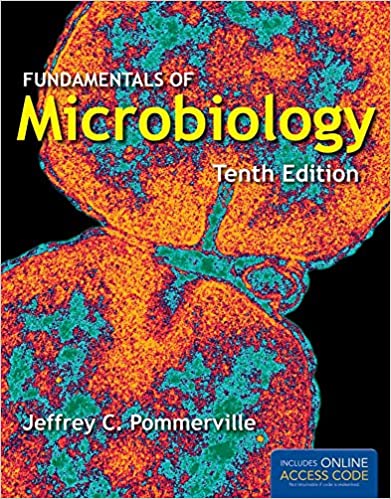
Fundamentals Of Microbiology 10th Edition by Jeffrey Pommerville
Edition 10ISBN: 978-1449688615
Fundamentals Of Microbiology 10th Edition by Jeffrey Pommerville
Edition 10ISBN: 978-1449688615 Exercise 1
Evaluate the role of variolation and vaccination as ways to interrupt disease transmission.
b. Contrast the observations and studies of Semmelweis and Snow toward providing a better understanding of disease transmission.
b. Contrast the observations and studies of Semmelweis and Snow toward providing a better understanding of disease transmission.
Explanation
a.
Vaccination is the process by which a killed or inactive form of a microbe is injected into an individual. This is done in order to initiate a host immune response against the said microbe, which will further help in providing better immunity on subsequent exposure to the microbe in future.
Variolation is the introduction of a disease causing microorganism in a patient, so that the patient exhibits a slight amount of illness, and then, later develops immunity towards it. This was seen in the study carried out by Edward Jenner, who was one of the first surgeons to understand the concept of vaccination. He noted that milkmaids, who had contracted cowpox earlier, were protected from smallpox.
To prove his observation, he took pus from cowpox lesion from a milkmaid and introduced it into a young boy's arm by scratching. The boy showed slight fever, but later recovered. On injecting the boy with smallpox pus after 6 weeks, the boy did not show any sign of small pox. A few years later, Jenner's concept of vaccination spread all over the world.
b.
Studies carried out by Ignaz Semmelweis and John Snow helped in understanding how diseases are transmitted. Semmelweis was an obstetrician in Hungary, who was appalled by the many women dying due to puerperal fever which is basically poisoning of blood. On further investigation, he found out the disease used to occur more in wards which were handled by medical students.
He realized that the source of contamination was the cadavers/corpses on which the medical students used to perform autopsies. On directing his staff to wash their hands with chlorine water, the incidence of the puerperal fever reduced. His observations thus, refuted the concept of miasmas. However, only few people heeded to what Semmelweis had suggested.
John Snow studied the cholera epidemic, which took place in London in 1845. His study showed that most cases of cholera during that time were due to the drinking water, which the residents were taking from the sewage contaminated pump. On removing the pump, the cases of cholera dropped drastically. Thus, Snow proposed that contrary to the belief of the public, cholera was a waterborne disease and not acquired through miasma.
Vaccination is the process by which a killed or inactive form of a microbe is injected into an individual. This is done in order to initiate a host immune response against the said microbe, which will further help in providing better immunity on subsequent exposure to the microbe in future.
Variolation is the introduction of a disease causing microorganism in a patient, so that the patient exhibits a slight amount of illness, and then, later develops immunity towards it. This was seen in the study carried out by Edward Jenner, who was one of the first surgeons to understand the concept of vaccination. He noted that milkmaids, who had contracted cowpox earlier, were protected from smallpox.
To prove his observation, he took pus from cowpox lesion from a milkmaid and introduced it into a young boy's arm by scratching. The boy showed slight fever, but later recovered. On injecting the boy with smallpox pus after 6 weeks, the boy did not show any sign of small pox. A few years later, Jenner's concept of vaccination spread all over the world.
b.
Studies carried out by Ignaz Semmelweis and John Snow helped in understanding how diseases are transmitted. Semmelweis was an obstetrician in Hungary, who was appalled by the many women dying due to puerperal fever which is basically poisoning of blood. On further investigation, he found out the disease used to occur more in wards which were handled by medical students.
He realized that the source of contamination was the cadavers/corpses on which the medical students used to perform autopsies. On directing his staff to wash their hands with chlorine water, the incidence of the puerperal fever reduced. His observations thus, refuted the concept of miasmas. However, only few people heeded to what Semmelweis had suggested.
John Snow studied the cholera epidemic, which took place in London in 1845. His study showed that most cases of cholera during that time were due to the drinking water, which the residents were taking from the sewage contaminated pump. On removing the pump, the cases of cholera dropped drastically. Thus, Snow proposed that contrary to the belief of the public, cholera was a waterborne disease and not acquired through miasma.
Fundamentals Of Microbiology 10th Edition by Jeffrey Pommerville
Why don’t you like this exercise?
Other Minimum 8 character and maximum 255 character
Character 255


